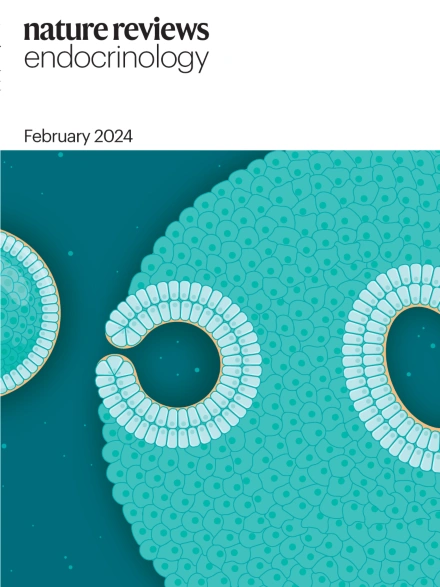The incretin effect — almost magical
IF 40
1区 医学
Q1 ENDOCRINOLOGY & METABOLISM
引用次数: 0
肠促胰岛素的效果——几乎是神奇的
60多年前,伦敦的几个科学小组奠定了现代医学治疗糖尿病和肥胖症的基础。重要的是,1965年McIntyre及其同事发表的《肠道因子控制胰岛素分泌》研究了葡萄糖代谢和肝脏的作用。这项工作对肠促胰岛素在人体中的作用的发现和肠促胰岛素激素的鉴定有显著的贡献。在这项简单而优雅的研究中,McIntyre及其同事描述了两种葡萄糖给药途径(空肠内输注或静脉输注)血液中葡萄糖水平和胰岛素分泌的差异。这项研究涉及9名健康个体和2名肝硬化患者,他们的血管从门静脉分流到腔静脉(从而绕过肝脏)。对于每种给药方法,4名健康个体和1名血管分流患者被给予10-20%葡萄糖的快速输注。空肠内给药葡萄糖超过10-20分钟,而相同量的葡萄糖(总共50-60克)静脉滴注30-45分钟,以模拟消化所需的时间,从而比较空肠内给药与血液中的葡萄糖水平。在所有五个人中,静脉输注后的血糖水平比空肠输注高1.6倍,值得注意的是,空肠输注后的胰岛素水平比静脉输注高4.3倍,这反映了肠道中存在高度胰岛素促生因子。
本文章由计算机程序翻译,如有差异,请以英文原文为准。
求助全文
约1分钟内获得全文
求助全文
来源期刊

Nature Reviews Endocrinology
医学-内分泌学与代谢
CiteScore
42.00
自引率
0.70%
发文量
158
审稿时长
6-12 weeks
期刊介绍:
Nature Reviews Endocrinology aspires to be the foremost platform for reviews and commentaries catering to the scientific communities it serves. The journal aims to publish articles characterized by authority, accessibility, and clarity, enhanced with easily understandable figures, tables, and other visual aids. The goal is to offer an unparalleled service to authors, referees, and readers, striving to maximize the usefulness and impact of each article. Nature Reviews Endocrinology publishes Research Highlights, Comments, News & Views, Reviews, Consensus Statements, and Perspectives relevant to researchers and clinicians in the fields of endocrinology and metabolism. Its broad scope ensures that the work it publishes reaches the widest possible audience.
 求助内容:
求助内容: 应助结果提醒方式:
应助结果提醒方式:


